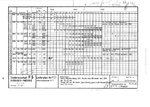F82 (twin Mustang):
Empty weight: 15,997lbs (7,271kg)
Max speed: 460Mph (740Kmh)
Bf109Z (based on joined Bf109F):
Empty weight: 13,224lbs (6,000kg)
Max speed: 462Mph (743Kmh)
Me609 (based on joined Me309):
Empty weight: 11,660lbs (5,247kg)
Max speed: 472Mph (760Kmh)
Compared to Me262A1/a (original configuration with Jumo004 X 2):
Empty weight: 9,709lb (4,404kg)
Max speed: 559Mph (900Kmh)
Now, we remove the two Jumo 004B engines: 1,585lb (719kg) x 2 = 3,170lb (1,438kg)
Me262A1/a without engines = 6,539lbs (2,966kg)
So let's take 2 DB603 V-12 engines, and install them into the empty Me262:
DB603 @ 2,030lbs (920kg) X 2 = 4,060lbs (1,840kg)
Result is a weight of 10,599lbs (4,806kg)
That's a weight increase of 890lbs (402kg) with a reduction of roughly 100Mph (160Kph) in speed...
And what happens if you put ammunition and fuel in the machine?
With 12000lb (when we add gearing, prop,etc for prop 262) vs. 16000lb (F-82) and 500HP more, plus the swept wings, why do you think that the speed would've been the same?
As for ammo and fuel, methinks that other planes would need the same stuff too...
As far as "Boom and Zoom" tactics go, it works as long as the enemy can't keep up with you...The allies had aircraft that could both "Boom and Zoom" and "Turn and Burn"...
The Germans dropped the Doppelganger projects in favor of the Ta152, because it of thier development problems and the fact that they just weren't performing as well as they had hoped.
The Zwilling (with hindsight*) could be made back in 1941 with 109F airframes, making the Ta-152 not a competitor.
*Since the thread is o 'what-if' type, hindsight is 100% OK.


